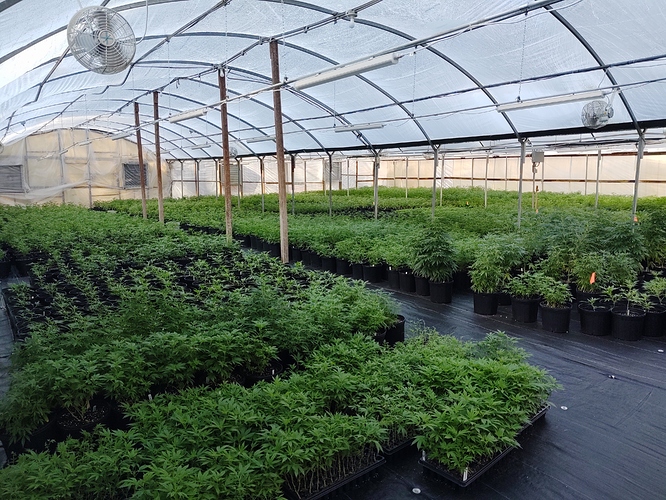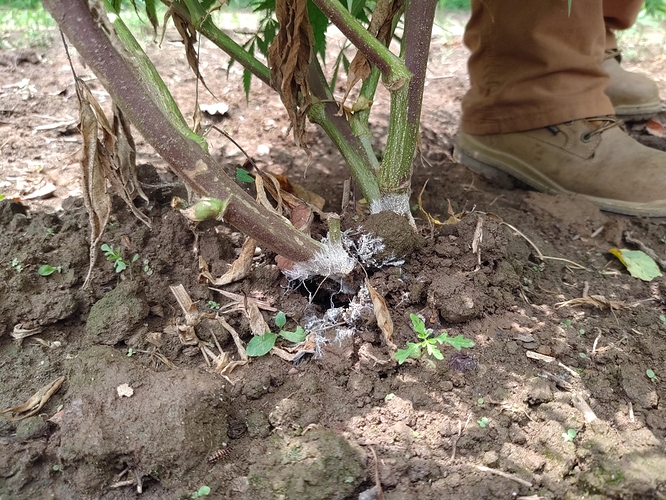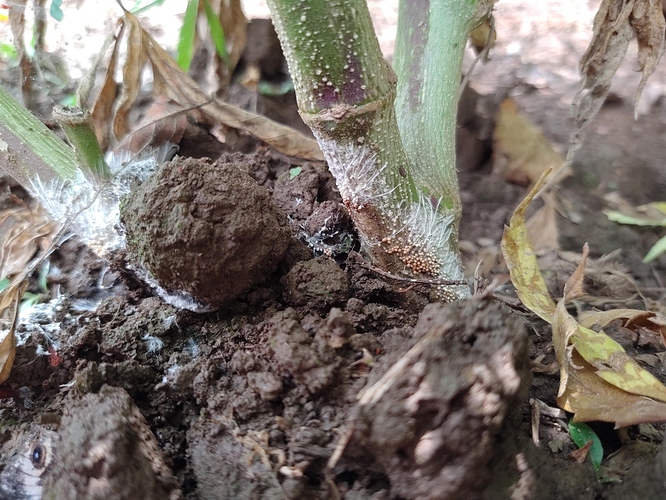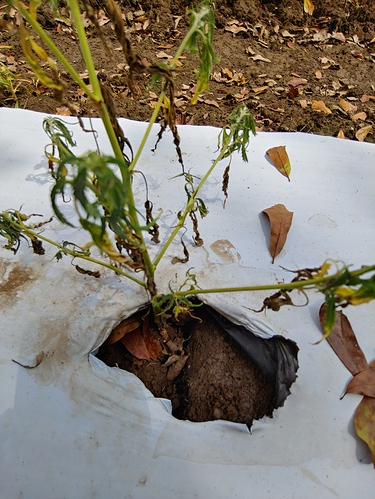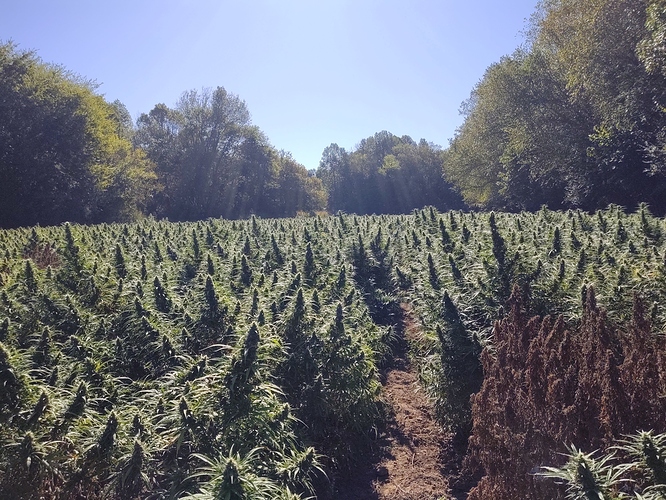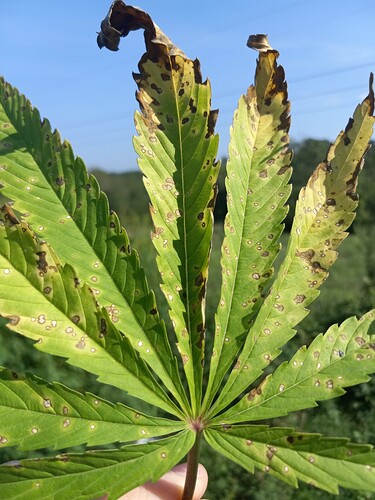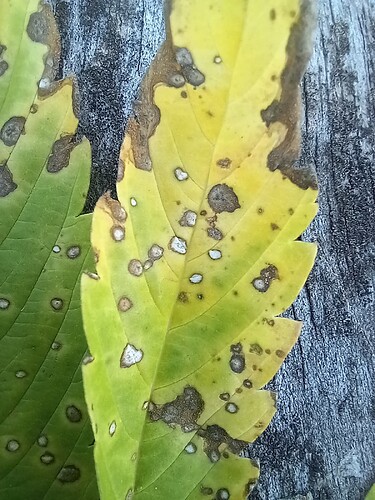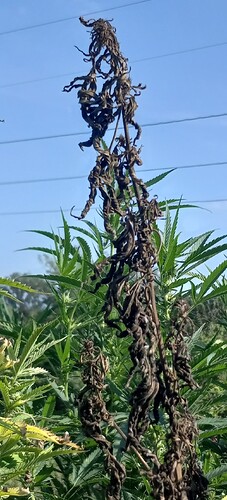Today we have the first but hopefully not last request for an entry in the Know your Enemy Series, from the homeboy @Autumn_Ridge_Hemp; and we’re going to be talking about Septoria Leaf Spot.
This is honestly something that you might not even realize has been affecting your outdoor or greenhouse crops, it could easily be mistaken for a nutrient deficiency especially since as time passes it could just clear up on its own. My own experience with Septoria seems to center around my cutting stock in the nursery (Largely because it is difficult to ensure the area is free of leaf debris) and sometimes in my production areas if the canopies get too dense and the humidity is high.
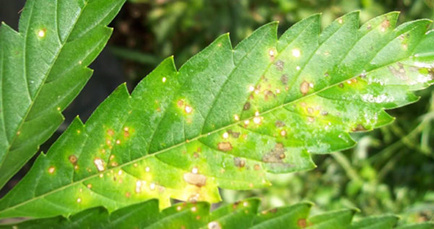
Example of early stage Leaf Septoria that could be mistaken for calcium deficiency
Symptomology:
Septoria leaf spot can start on any portion of the leaves of your plant, but typically it will begin on the lower leaves and gradually spread up the plant; even affecting the stem eventually if the diseases is allowed to progress long enough. Initial symptoms of the disease consist of small dark brown spots like pin-pricks, which gradually increase in size and turn lighter colors and eventually gray-white as the tissue is aborted. Oftentimes the area around the spots will also dry and crisp up, causing various forms of leaf distortion beyond the spotting for which the disease is named. Defoliation is the next step in the progression of the disease, and leaves will turn brown and drop off; the detritus from this event will also spread it to unaffected plants nearby in the right conditions.
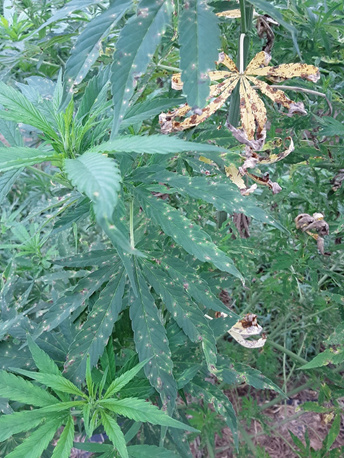
Above photo courtest of @Autumn_Ridge_Hemp ; great example of an advanced Septoria Infection
Cultural Control Methods:
Ideally, you’ll want to set yourself up to not experience issues with Septoria in the first place, you can mitigate your risk of infection by following a few simple steps in your grow area. To start, make sure you prune your plants properly for airflow. During veg, and again during flower, you have opportunities to ensure that your canopies don’t develop “bird-nesting” or otherwise create environments that will easily trap moisture and humidity and allow Septoria as well as other fungus to thrive. On a related note to that, remove any pruned foliage (and especially foliage you removed due to infection!) from your grow area for disposal. Failure to remove leaf debris is probably the most common cause for infection and re-infection of your plants. Crop rotation can help majorly here, as Septoria can overwinter in the soil readily, but in the event you don’t have enough room for that proper sanitation of the area takes on another level of importance.
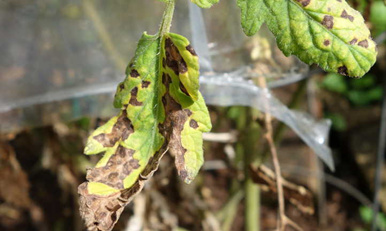
Above an example of a leaf just before it succumbs to Septoria and drops
Now I know you all know the importance of weed-removal for general plant health, but in this case it becomes even more important since many weeds are excellent hosts for Septoria and will readily pass it on to your crop. Weeds such as horse nettle, motherwort, and various nightshades are notoriously susceptible to Septoria and will spread it if given the opportunity. Its important to remove weeds that are close to your grow as well as manage the ones that are in the area as well. Sometimes it even pays to spray them with fungicides if you know you wont be able to keep up on removal.
Now say you’ve pruned all your infested foliage, removed it from the area, and burned the whole pile along with the clothes you were wearing. Is that enough?! Well, hopefully yes but actually…no. You can also do a few more things that will help prevent future outbreaks and really are a generally decent idea to integrate into your system anyway. Once you’ve removed all infested foliage, and cleared the area completely of leaf detritus, allow your soil to dry down completely and then place a thick layer of mulch down on your rows. Not only will this help with water retention in your soil, but it will help to suppress any fungal pathogens that might remain in the soil from rising up onto your plants.
Chemical Controls:
If you’re like me, you’ve always got your finger on the trigger. Well close your eyes and squeeze, there are plenty of perfectly safe fungicides to use on your crops preventatively for Septoria. Pretty much any general use fungicide should be labeled for Septoria since its so common, so it should be relatively easy and relatively affordable to find one that you feel comfortable using. Personally I am a fan of Cease (Bacillus Subtilis) Milstop (Potassium Bicarbonate) or Zerotol 2.0 (Hydrogen Peroxide).
How has everyone else dealt with Septoria or other fungal infections in their growing area?
